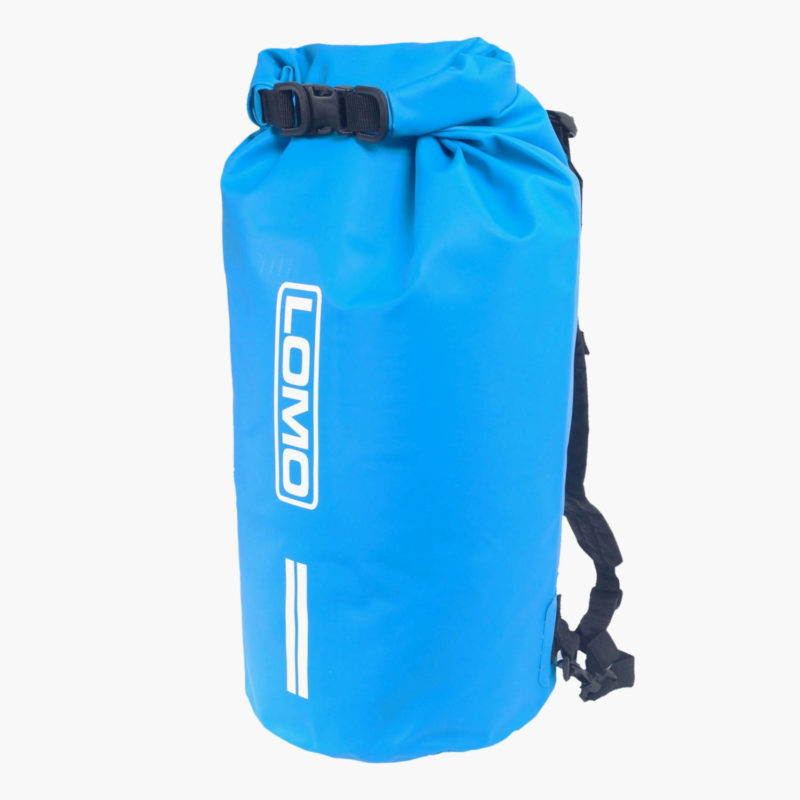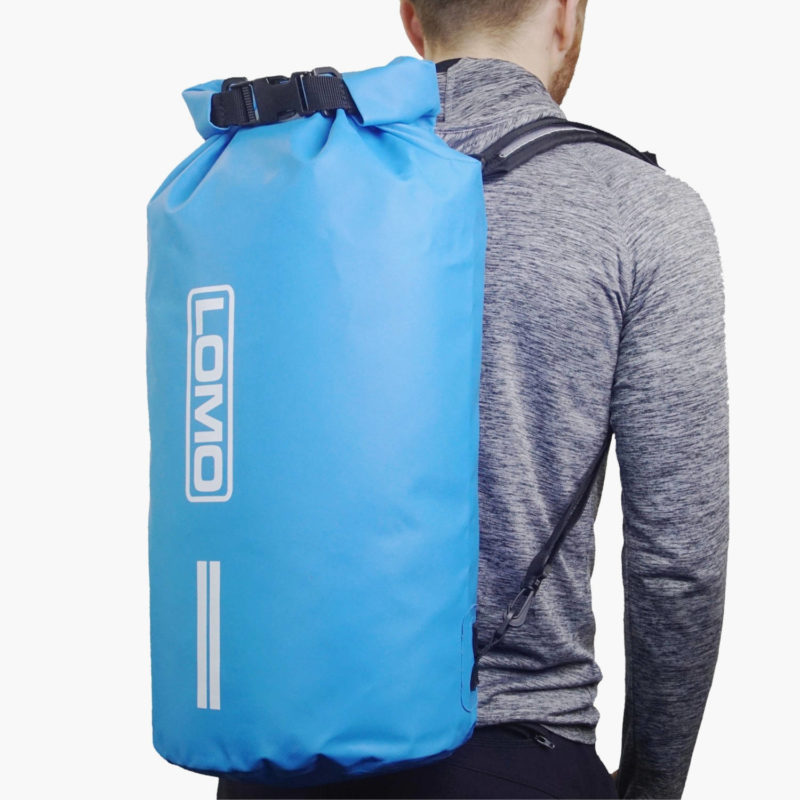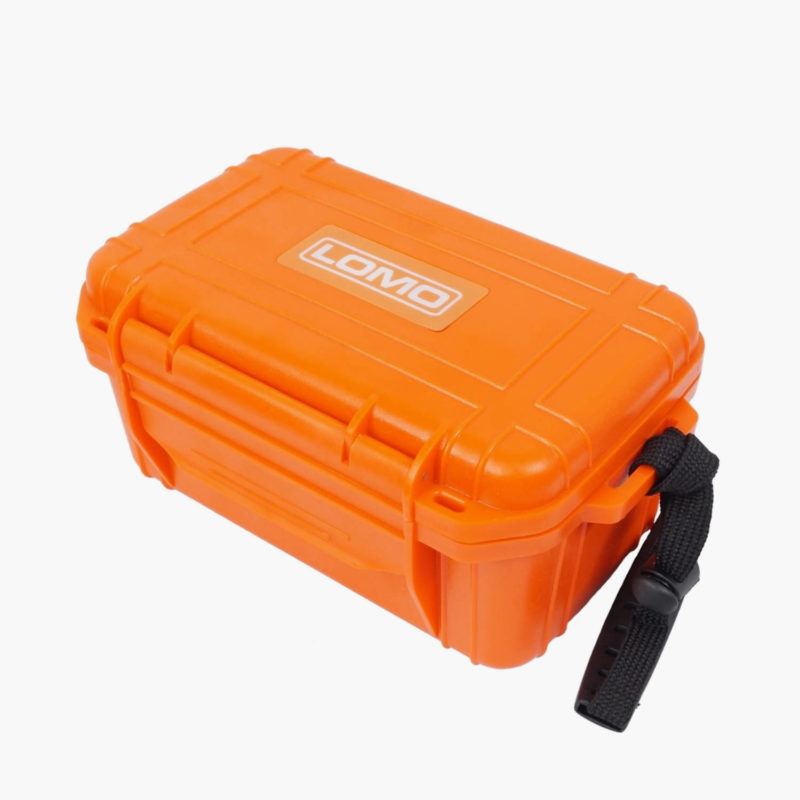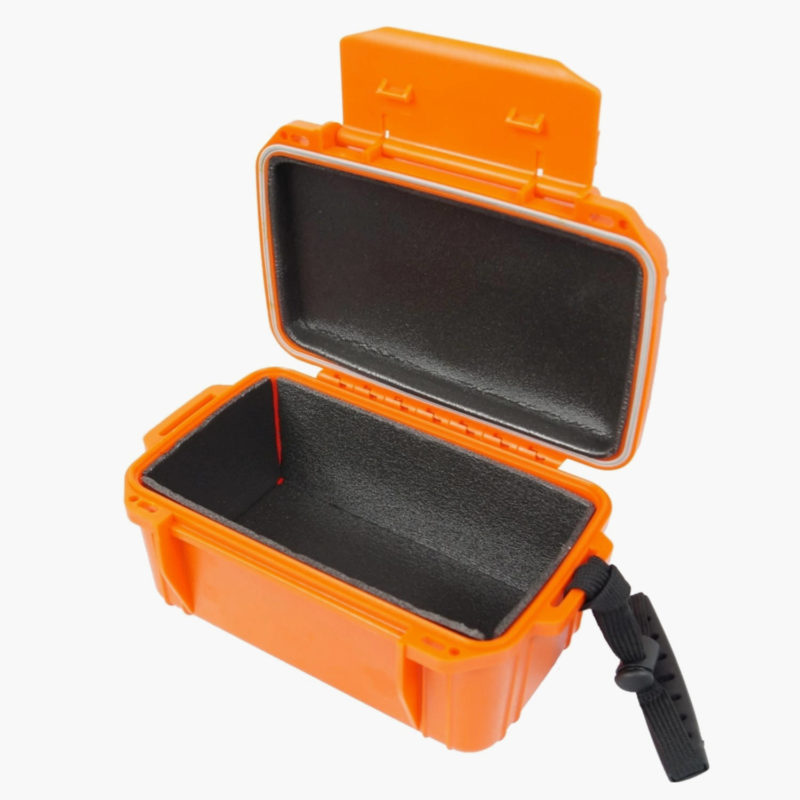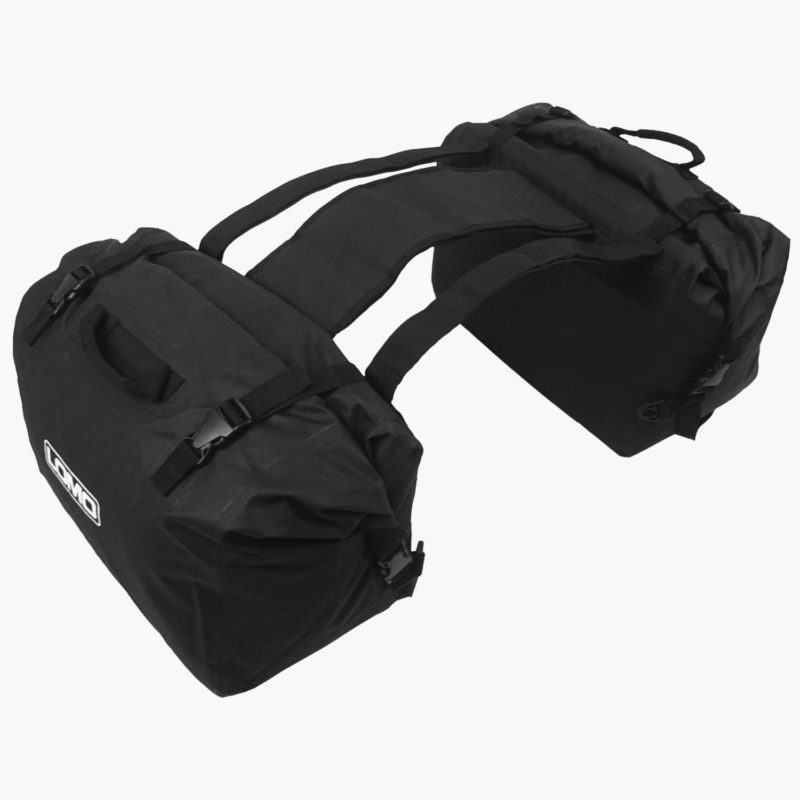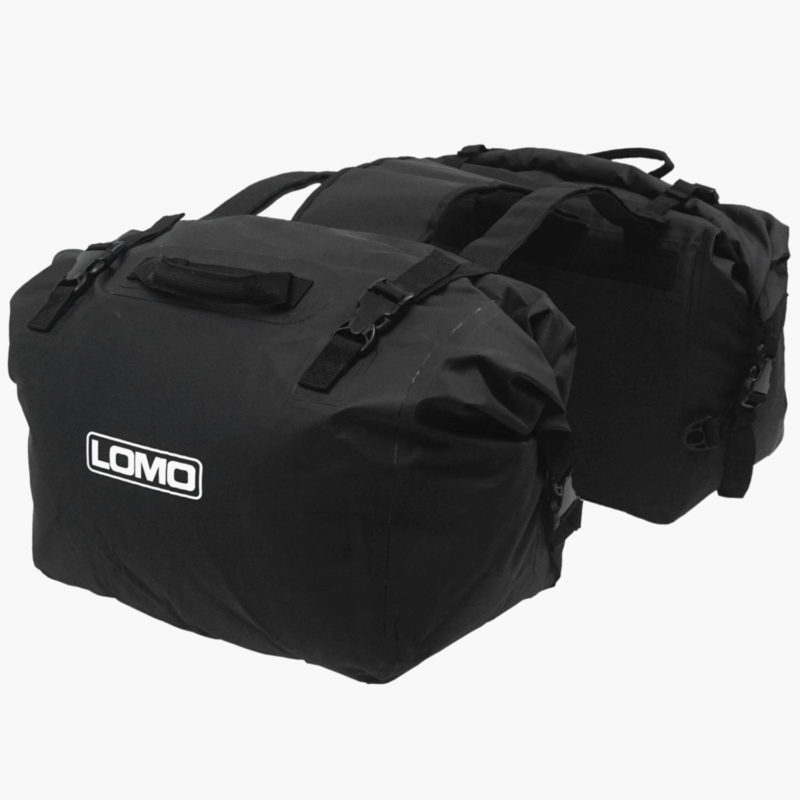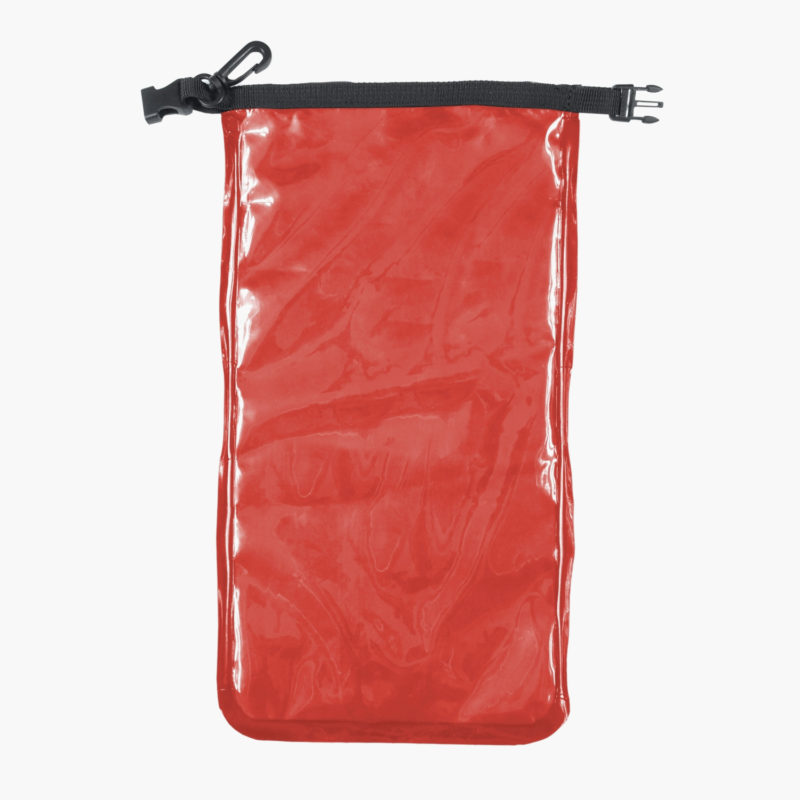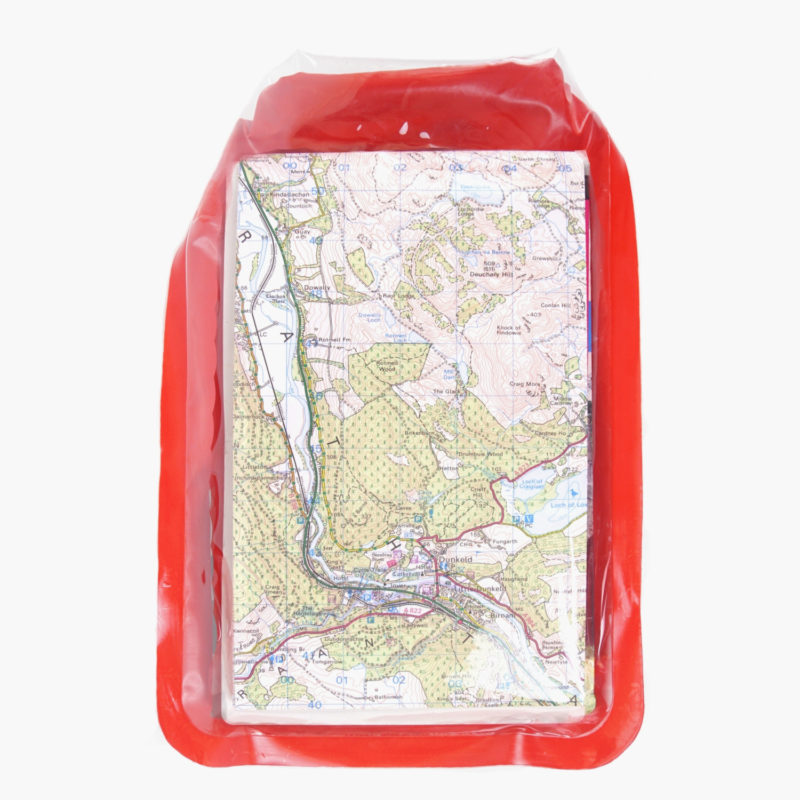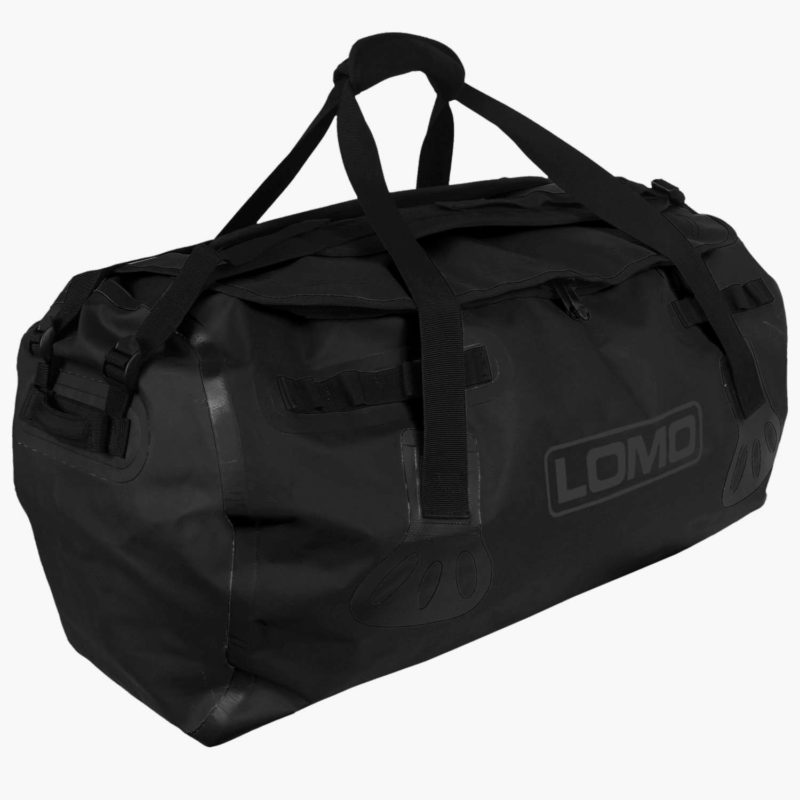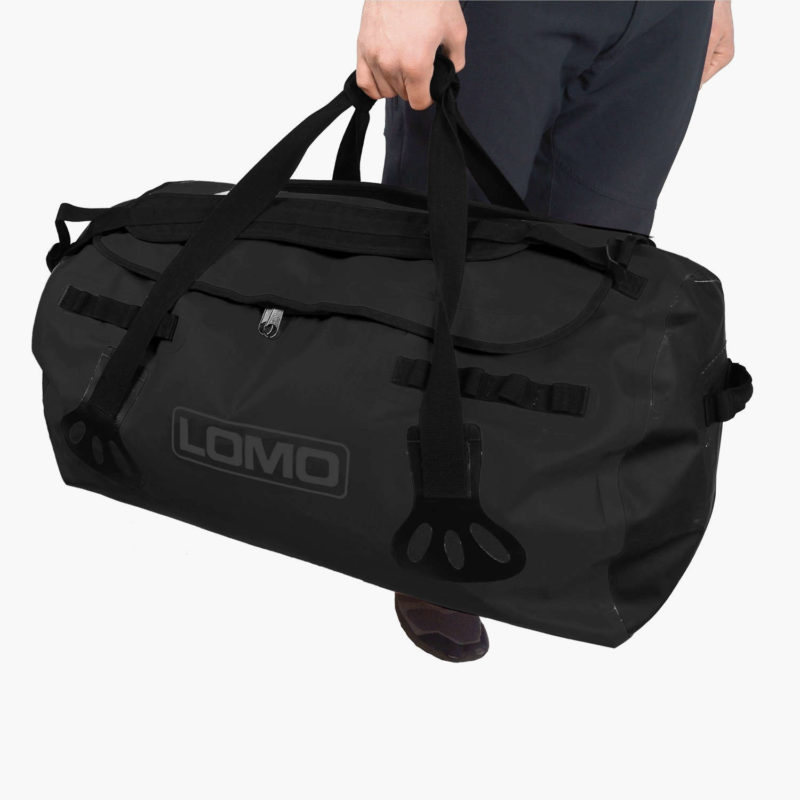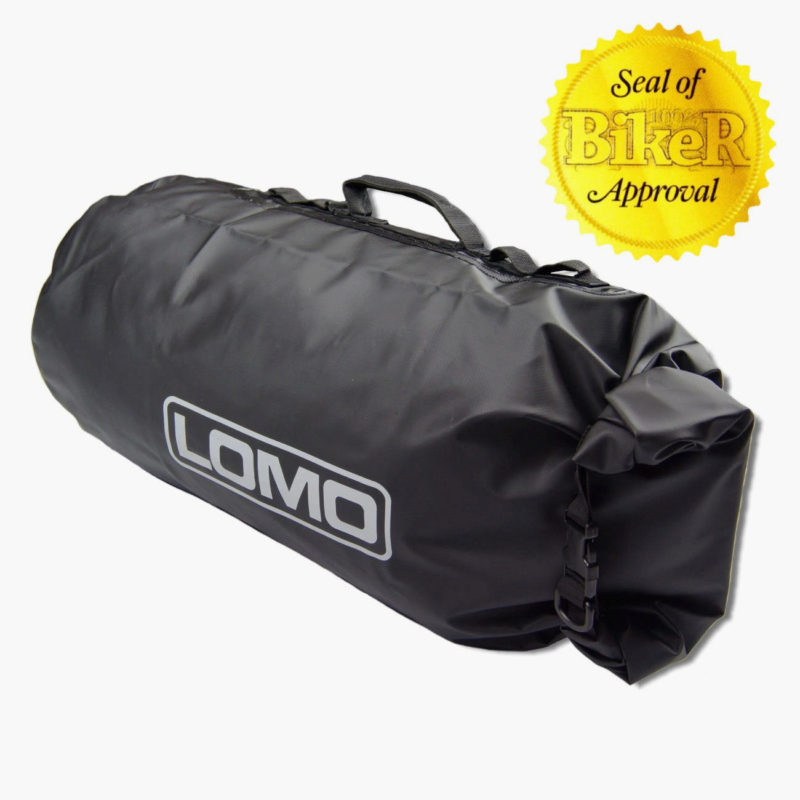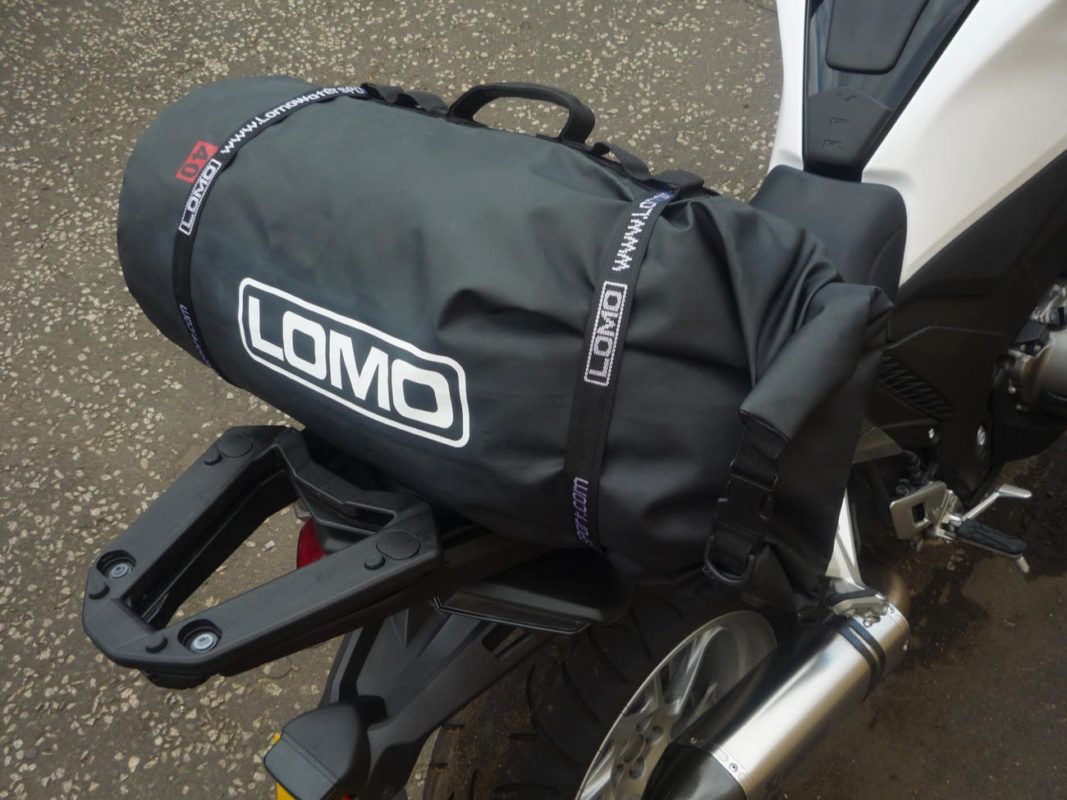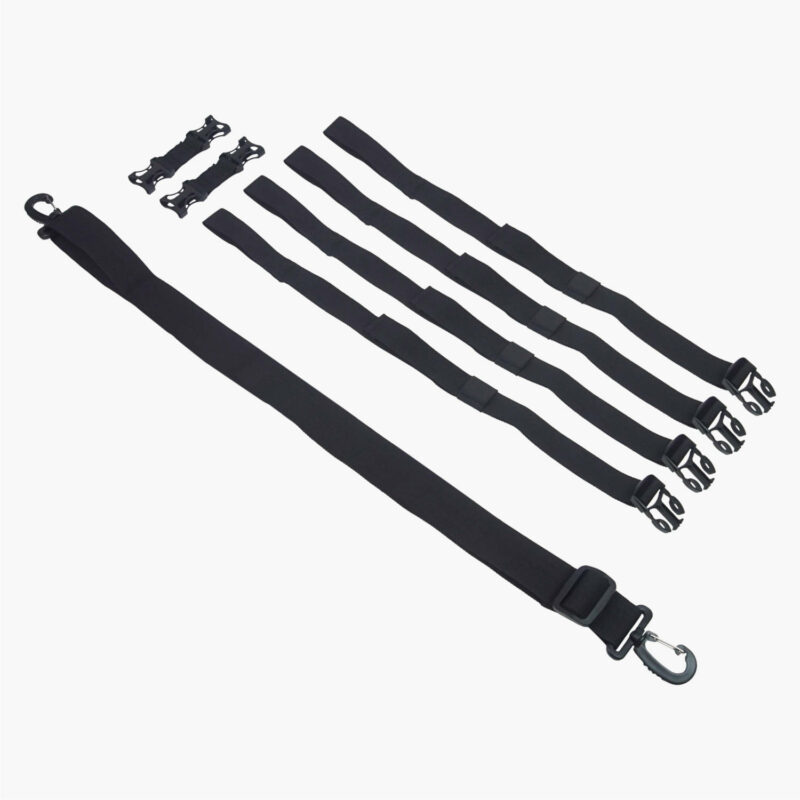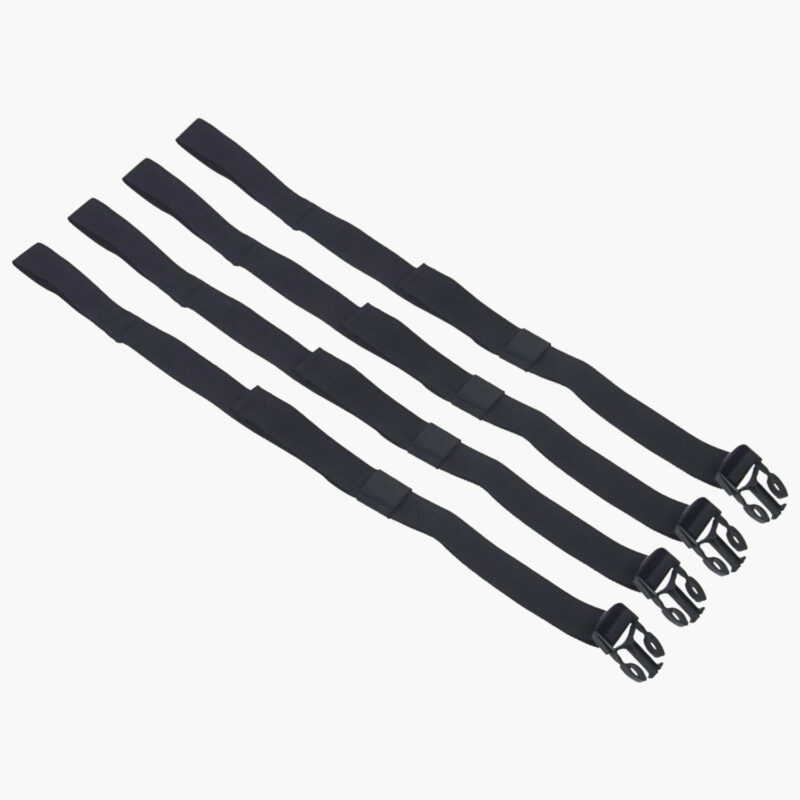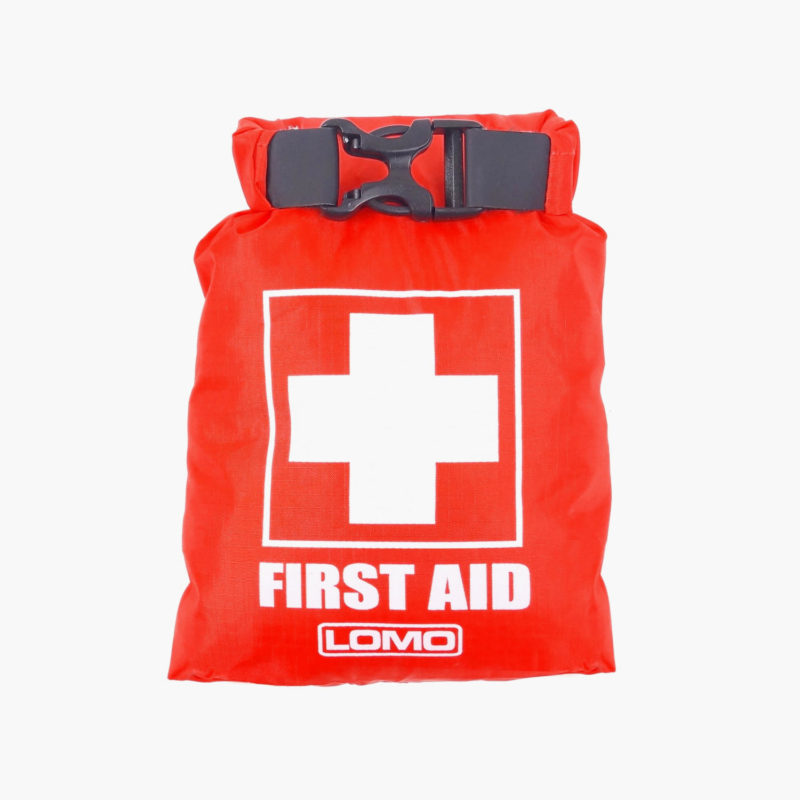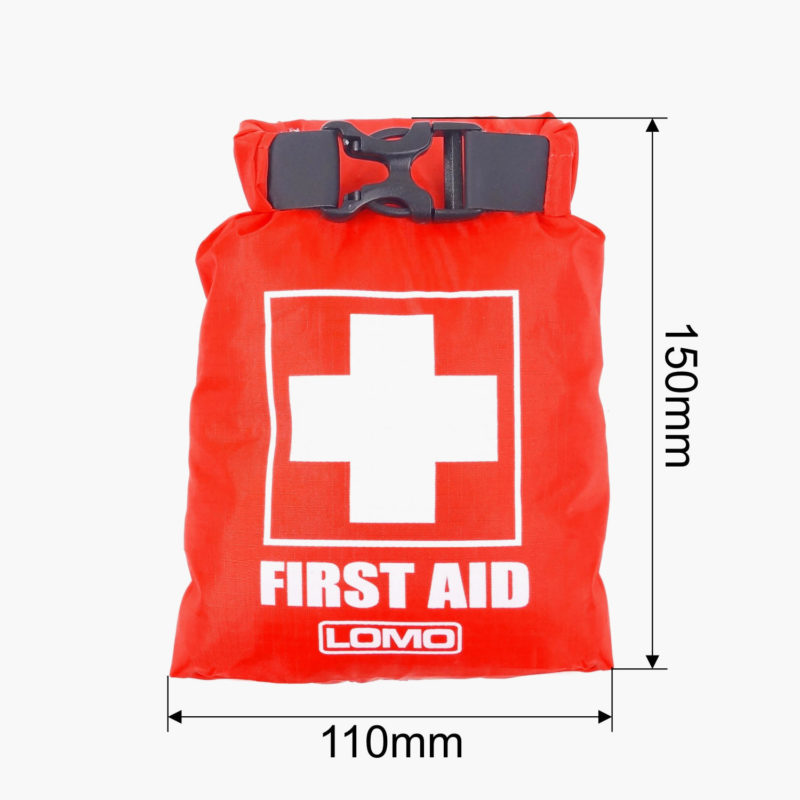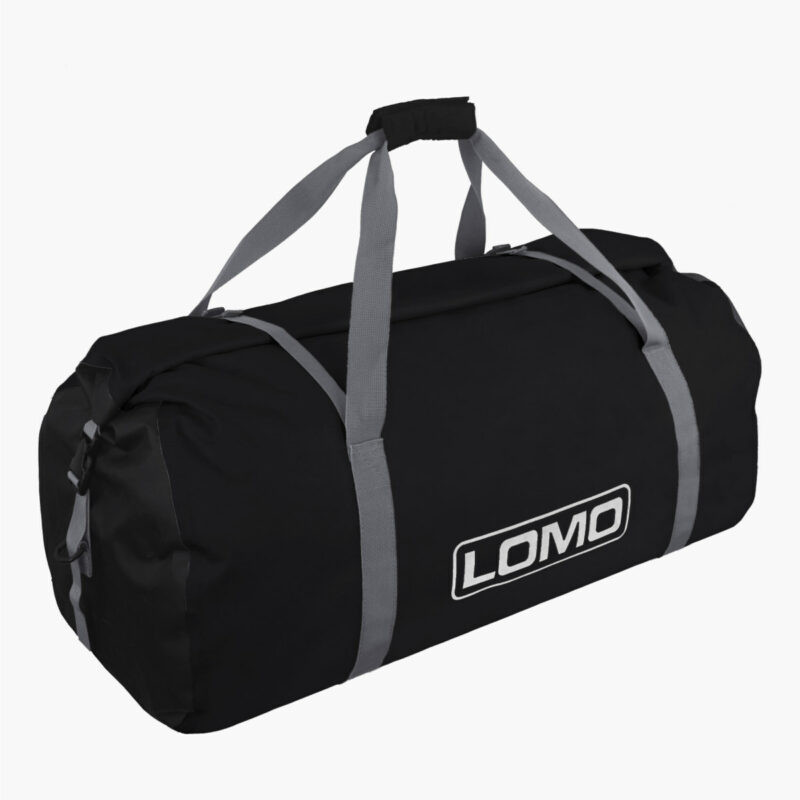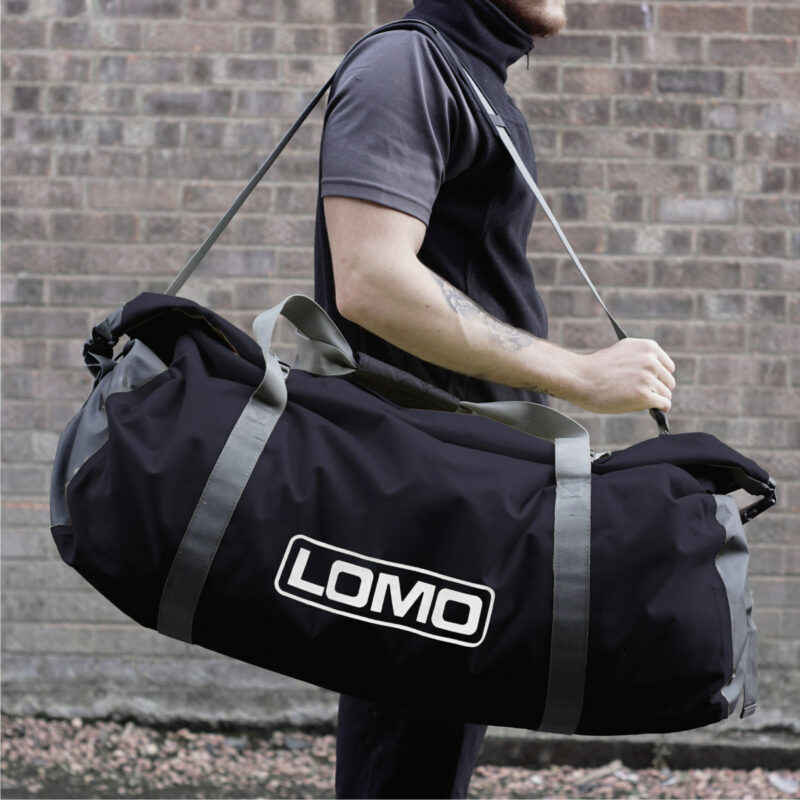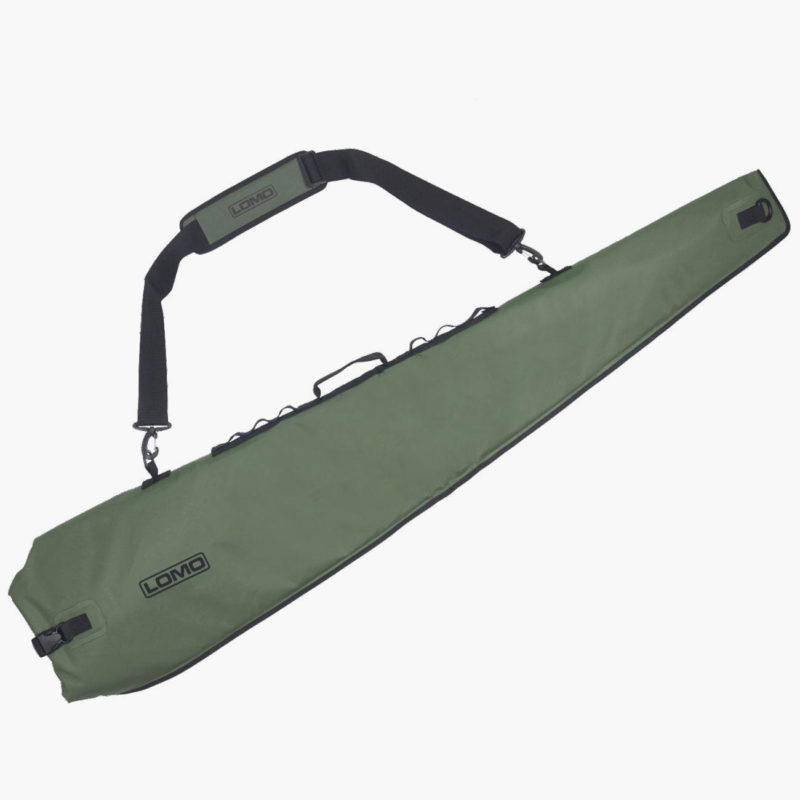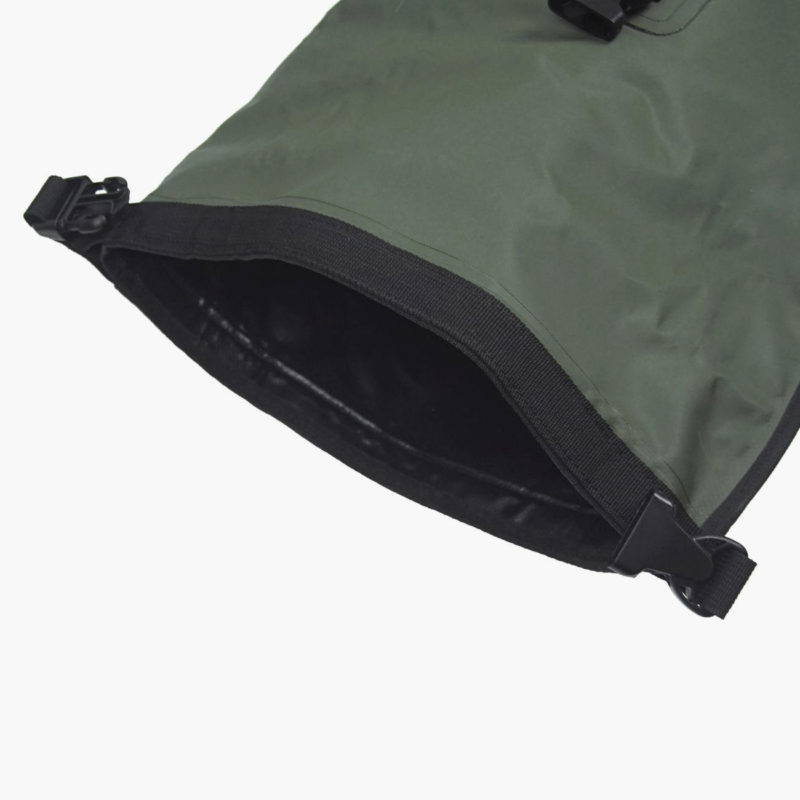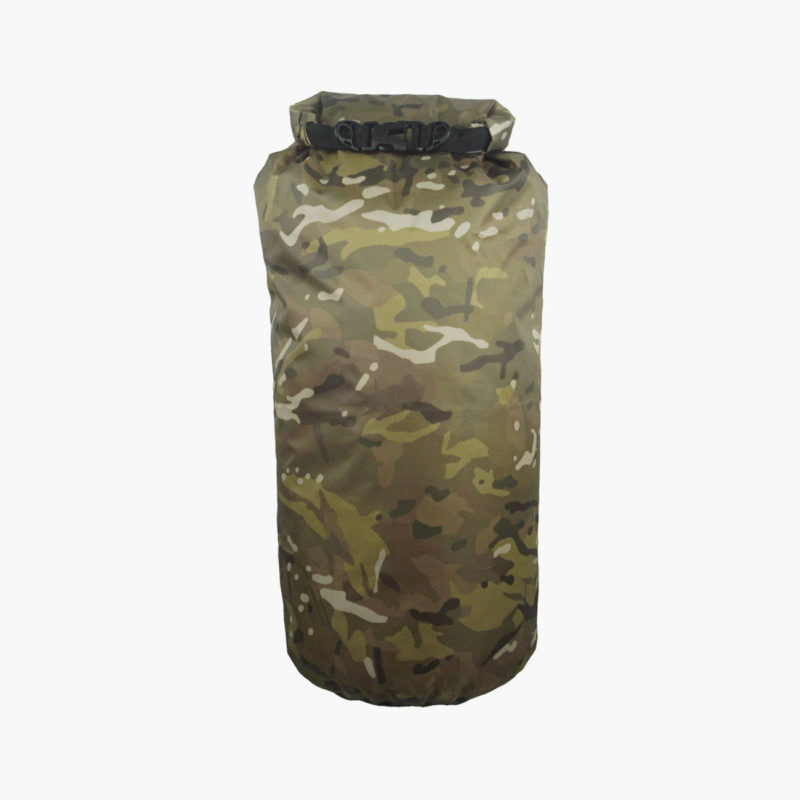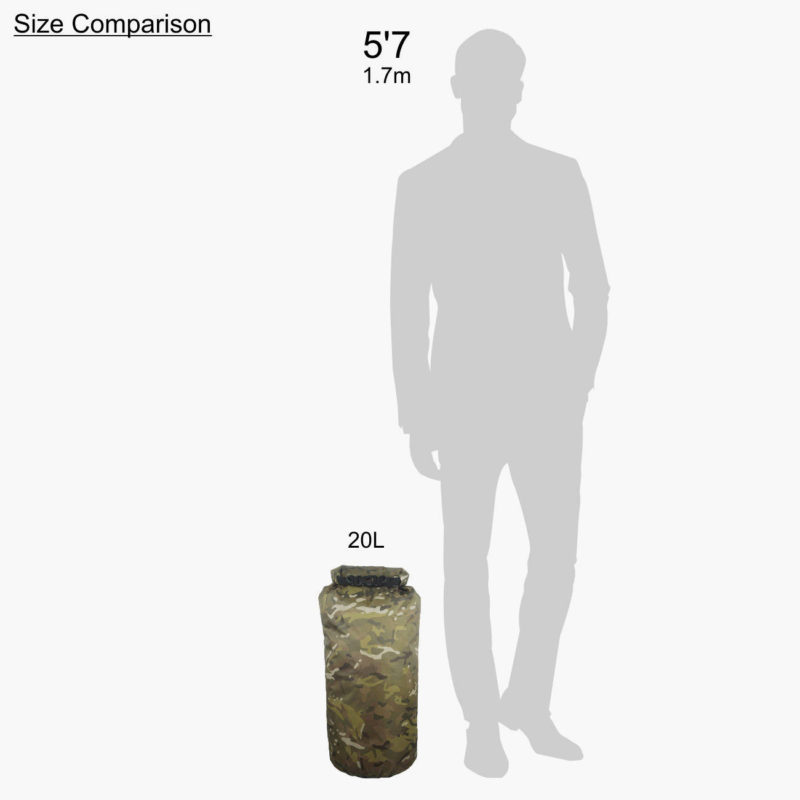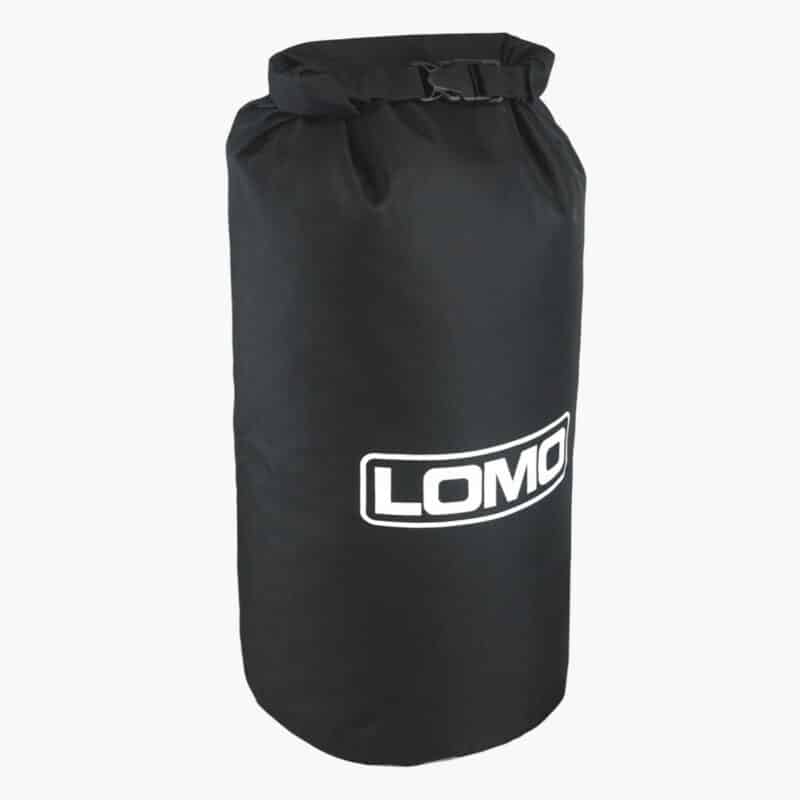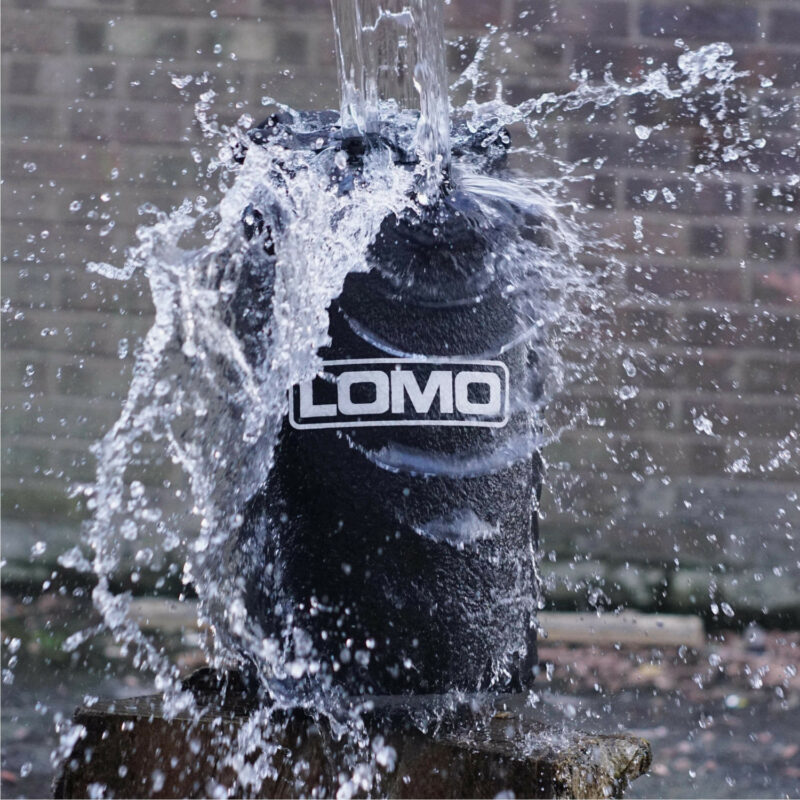A Guide To Dry Bags And Their Types
Dry bags are a type of luggage designed to keep your gear dry in a variety of conditions. They are commonly used in sports such as kayaking and sailing as well as on the beach or even on the back of a motorbike. In this article we will look at the different dry bag types and what you should expect from them.
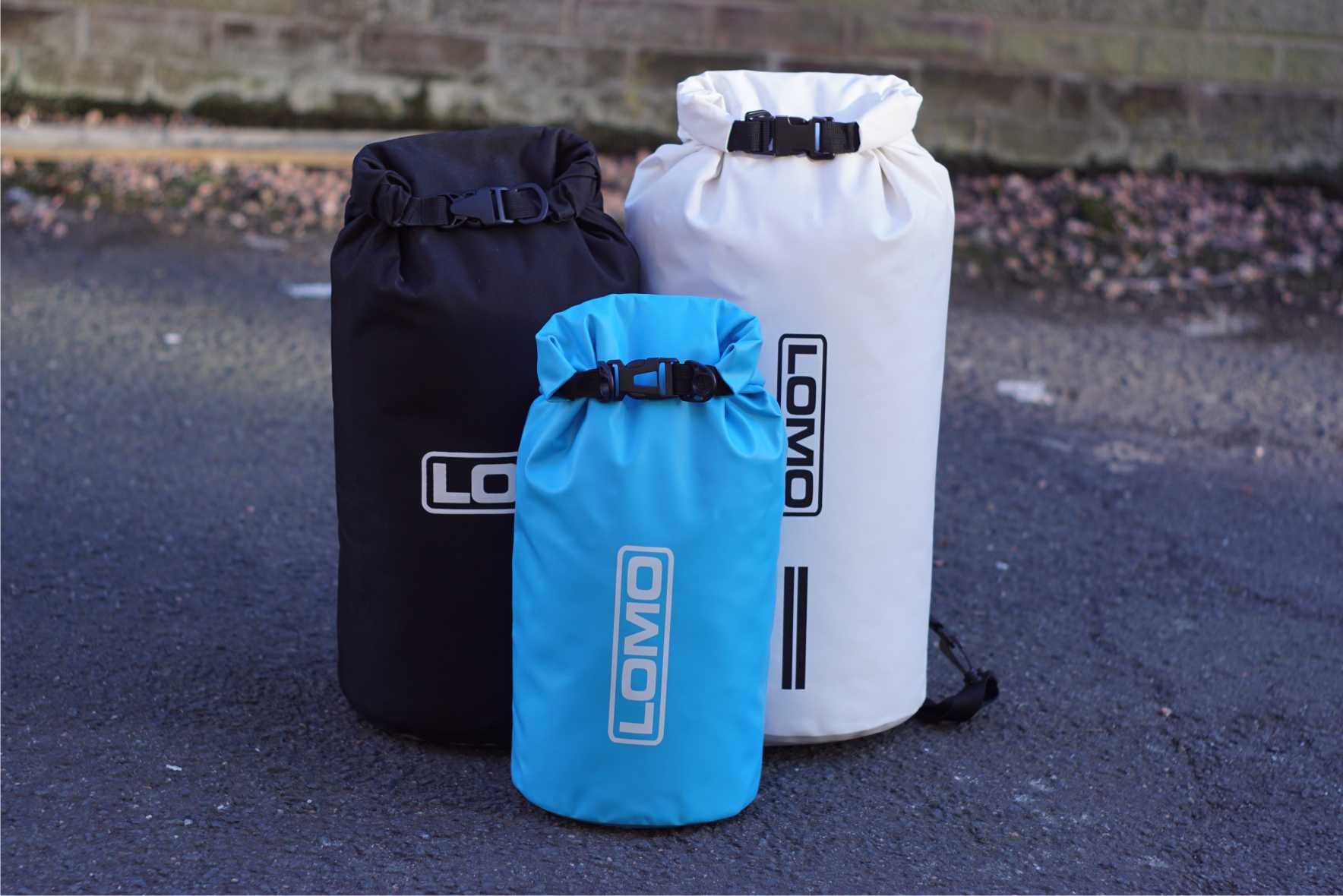
Barrel Roll Top Bags
Barrel shape dry bags are probably the most common dry bag style. They are cylinder shaped with an opening at one end. The seams in these dry bags are normally welded by RF welding to make them watertight. Gear is loaded in from the open end of the bag. The open end is normally closed by rolling down the extra material at the top then fastening 2 clips together.
Watch our video on how to close a drybag to see this in action.
A roll down closure can withstand rain, waves, and if the bag is dropped in the water be able to float for a period of time. Most roll down top dry bags will eventually let water in if the bag is kept totally immersed under water for long enough as the water gradually makes its way around the folded material. This situation is rare though and in most situations you would need to physically force the bag underwater and hold it there to achieve this.
Some drybags have transparent viewing panels on the side to allow you to see the contents and are popular for use as sailing and kayaking dry bags. The roll down top makes these one of the most waterproof dry bag types.
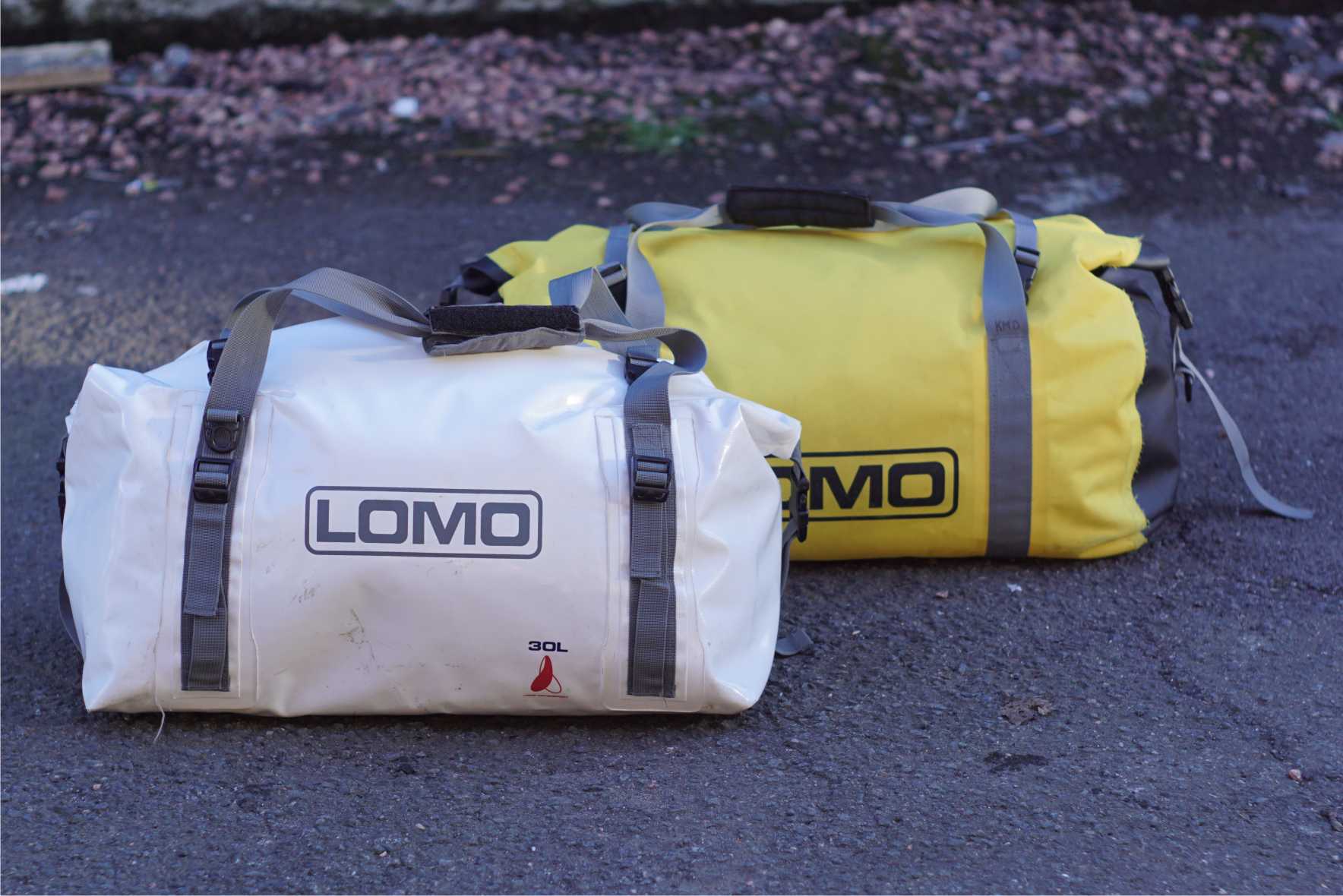
Dry Bag Holdalls
Dry bag holdalls normally have a wider opening that roll top barrel bags. This allows you to get access to the contents more easily than a barrel bag. Generally speaking the closure of a holdall bag is not as watertight as a barrel bag as it is more difficult to maintain pressure on the rolled down material.
The bags are still watertight in most conditions and the difference would really only be seen in total immersion situations.
Dry bag holdalls are very popular for motorcycling and can often bee seen secured to the back of a motorbike whilst on tour. The wide opening allows gear to be easily found and the roll down top makes sure water stays out in the heaviest of rain.
Dry bag holdalls are also very popular in general outdoor sports where you might want to carry your clothing in a generally wet environment. From putting on a car roof rack, to getting on board a boat drybag holdalls are very useful to have around.
Holdalls are one of the most versatile dry bag types.
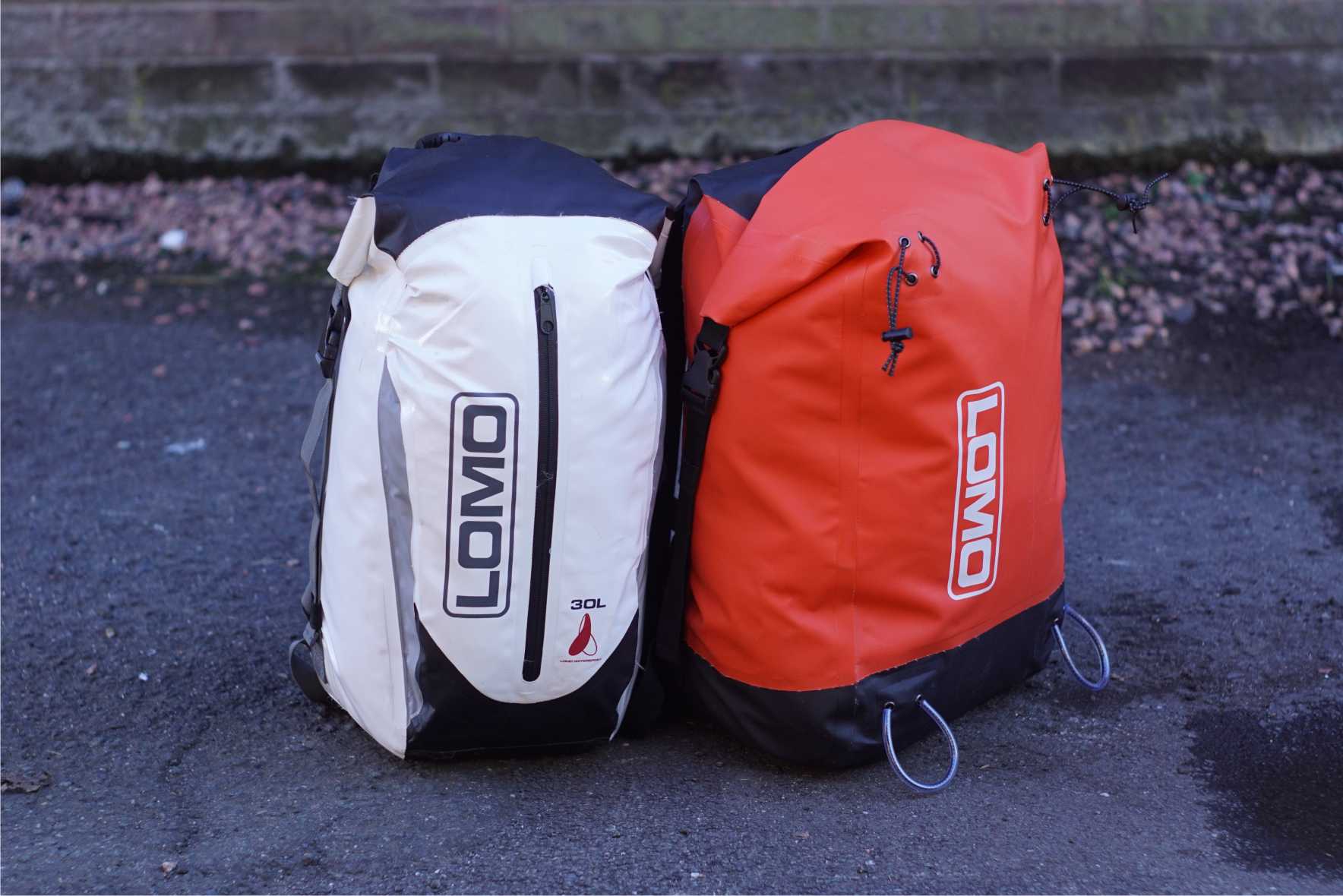
Rucksack Dry Bags
Rucksack drybags come in a variety of sizes and are used in different ways. Some hill walkers use them instead of traditional rucksacks and love the fact that all their gear is still dry at the end of a day walking in the rain.
They are used by kayakers and sailors to help get their gear to it's destination whilst keeping their hands free to carry a kayak etc.
Rucksack bags are also very popular in industry where a whole variety of remote workers use them to ferry equipment to and from the worksite. We have seen them used in offshore windfarms, with pylon workers for their safety gear, as rope bags, in offices and factories for their fire marshals emergency gear and many more applications where you need to keep essential kit dry whilst being carried.
Our smaller rucksacks around 30L have also won awards from motorcycle publications as they are ideally suited to motorcycle riders in wet conditions.
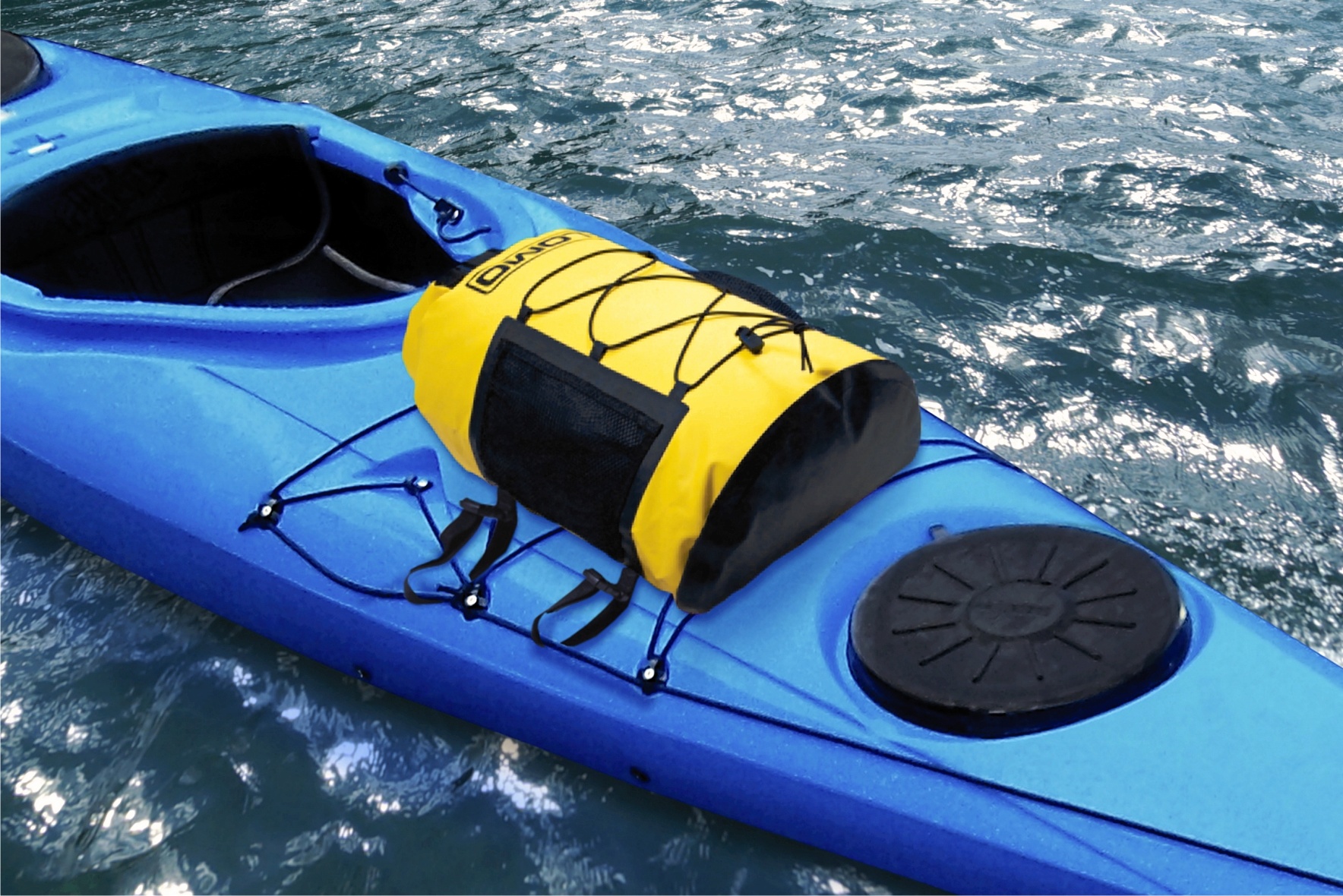
Kayak Dry Bags
Drybags are almost an essential item for kayaking and in particular sea kayaking. Keeping your gear dry so that you can camp when you reach your destination is pretty essential. The hatches in many boats are not totally dry and putting your gear into drybags and then into hatches should ensure that your kit is still dry when you reach your destination.
On arrival being able to withdraw the gear from the hatches and then still have them in a waterproof bag whilst you make camp is also of great benefit.
If carrying a lot of gear you will sometimes see dry bags strapped to the top deck of sea kayaks if the hatches are full. Some kayakers have dedicated deck bags which are placed immediately in front of the seating position and allowing access to the contents while at sea.
Tapered kayak drybags are specially shaped to fit into the nose of a kayak and sometimes feature a valve to allow excess air to be squeezed out of things like sleeping bags thus making more storage space available.
Checkout our kayak packing video for some great ideas on how to use drybags on a kayaking trip.
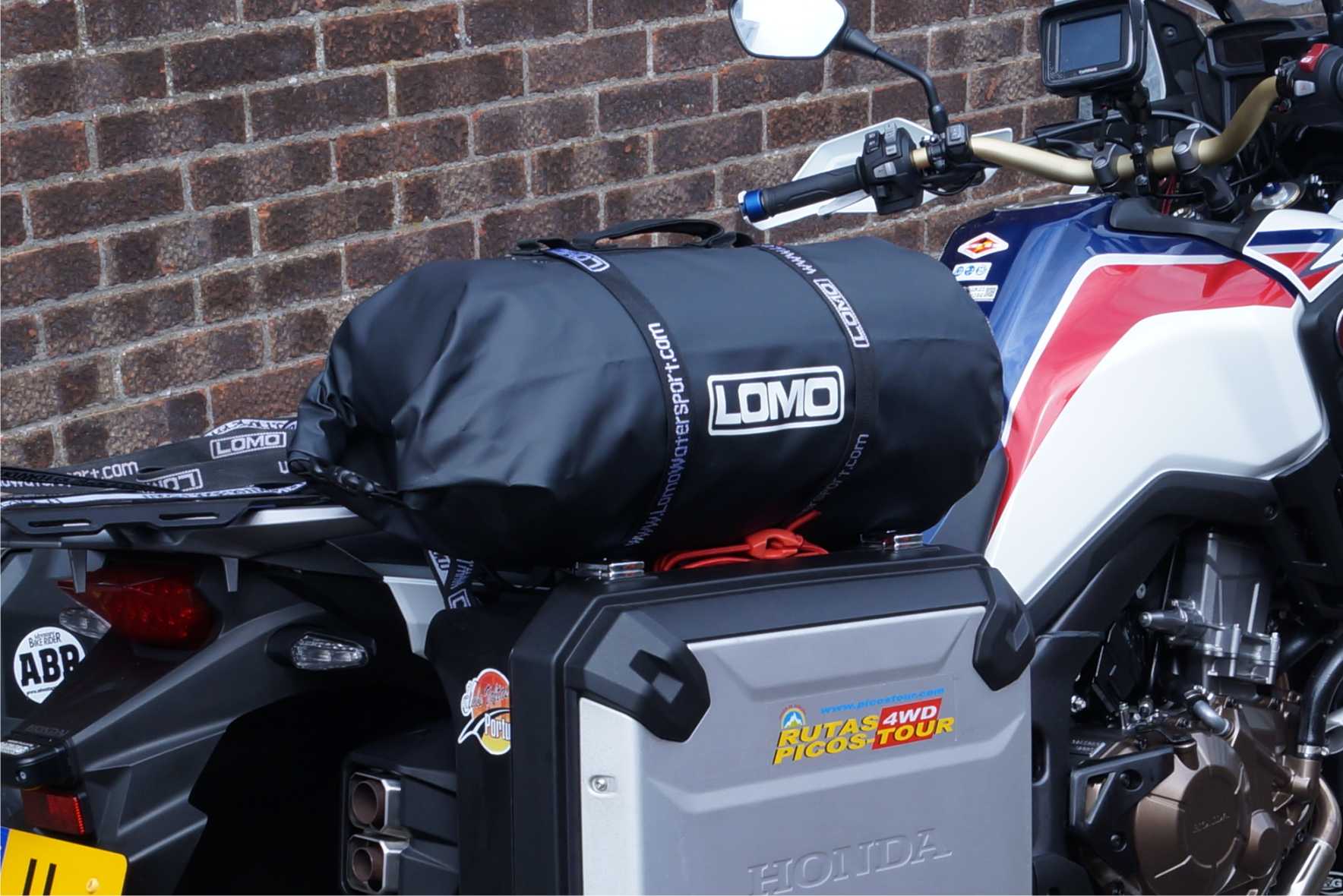
Motorcycle Dry Bags
Motorcycling can often be just as wet as many watersports with driving rain pelting against you whilst driving at speeds of up to 70 mph. Keeping your gear dry in these conditions is challenging to say the least. Motorcycle drybags are becoming more common. They can be used in several different ways.
Motorcycle pannier dry bags are very popular and can be used with and without pannier frames depending on the design of your bike.
Tail dry bags are often seen strapped to the rear of the bike with wider ones often sitting on top of panniers on the side. Holdall style bags are popular for weekends away as they can be taken off the bike and carried straight into your hotel just like a normal bag but all your gear will still be dry.
Rucksack dry bags are also very popular in smaller sizes of around 30L capacity. These are very popular for commuting and also for adding to you carrying capacity given by your tail bags.
There are also special dry bag types aimed at adventure bikes
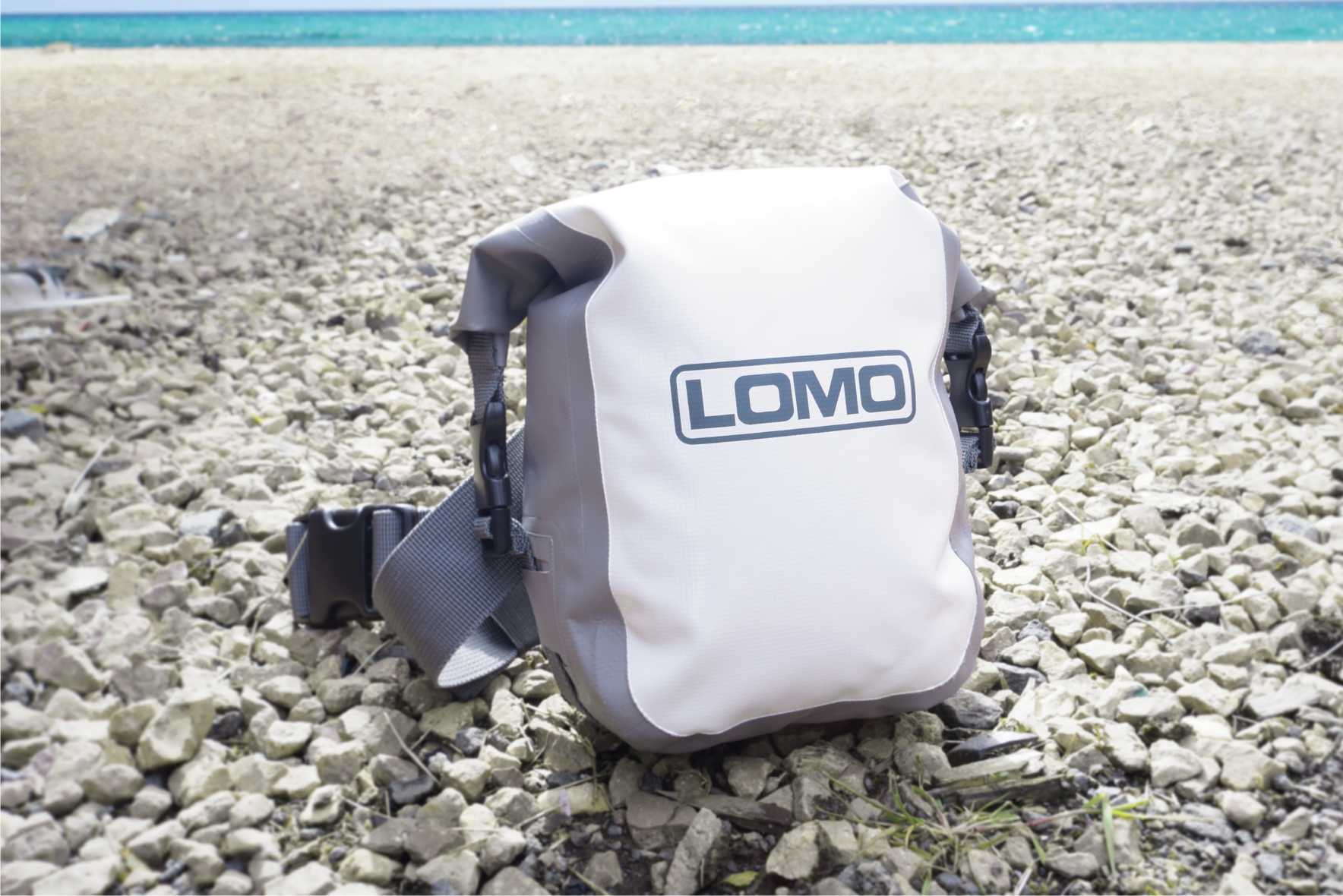
Dry Bum Bags
These are of use if you want to keep some key items close at hand. They are useful in sailing and motorcycling as well as many other uses. They are often used to keep phones and keys with the wearer. If being used to keep expensive electronics dry and there is a risk of you falling in the water whilst still wearing the bag it would be advisable to ‘double bag’ your phone in these circumstances; a small lightweight drybag can be used for these purposes.
Dry bum bags are not suitable for distance swimming with as the bag would be completely submersed for long periods of time and water may eventually work its way round the closure.
Dry bum bags have become popular for carrying first aid items in so they are handy and personal medication such as inhalers can also be carried in these to help keep them dry and available when they are required.
Bum bags are one of many different speciality dry bag types.
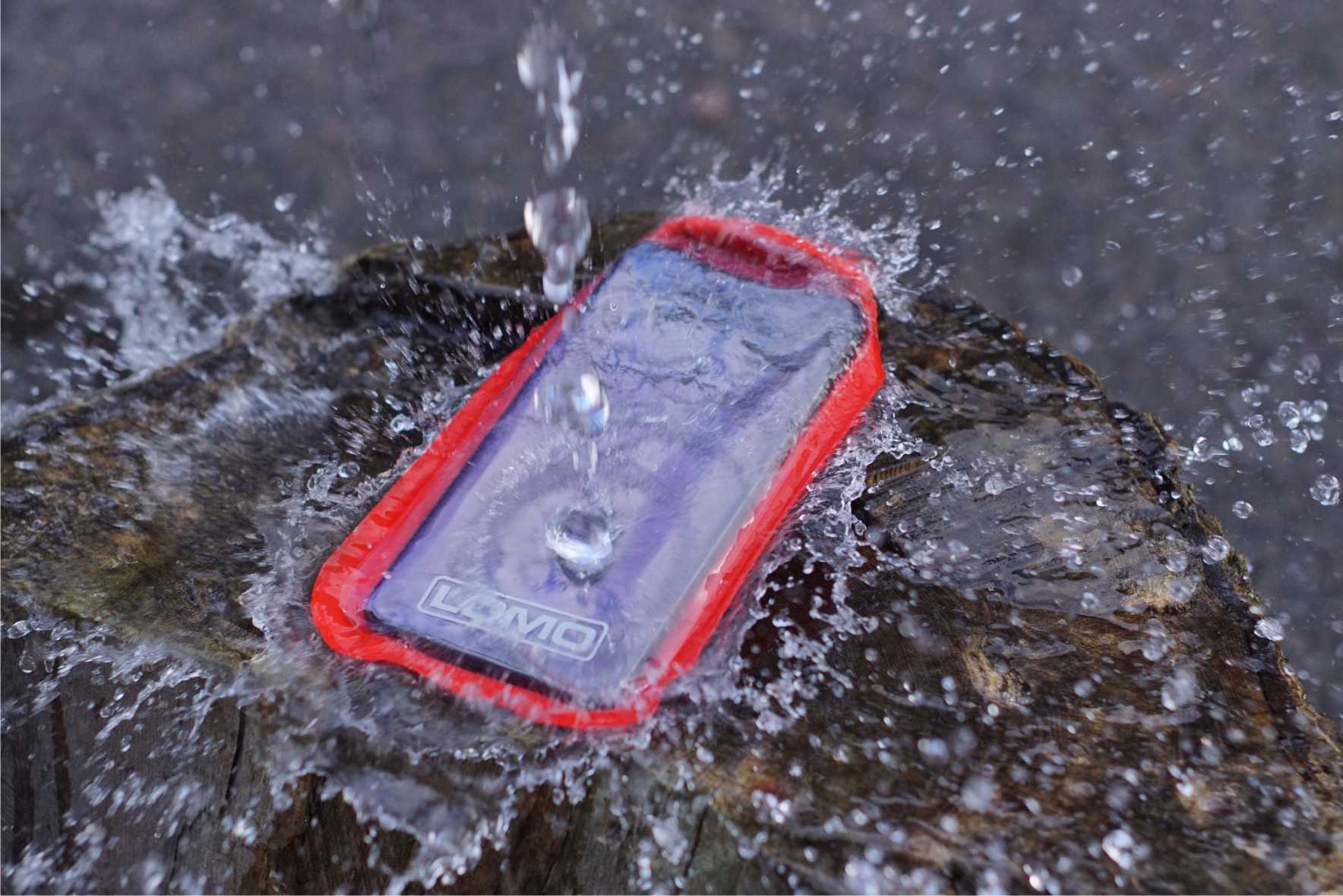
Mobile Phone Dry Bags
Mobile phones are one item that you want to make sure keeps dry. Also you may want to be able to use the phone whilst it is still in the bag so you’ll probably want one that has a transparent front and works with the touch screens of modern smart phones.
Most mobile phone dry bags will have a roll down top like a mini barrel bag and be able to resist most downpours etc but are not designed to be totally immersed for long periods of time so don’t try to go snorkelling with them! If you need to take your phone underwater then there are some products on the market with hard plastic closures that may allow you to do this.
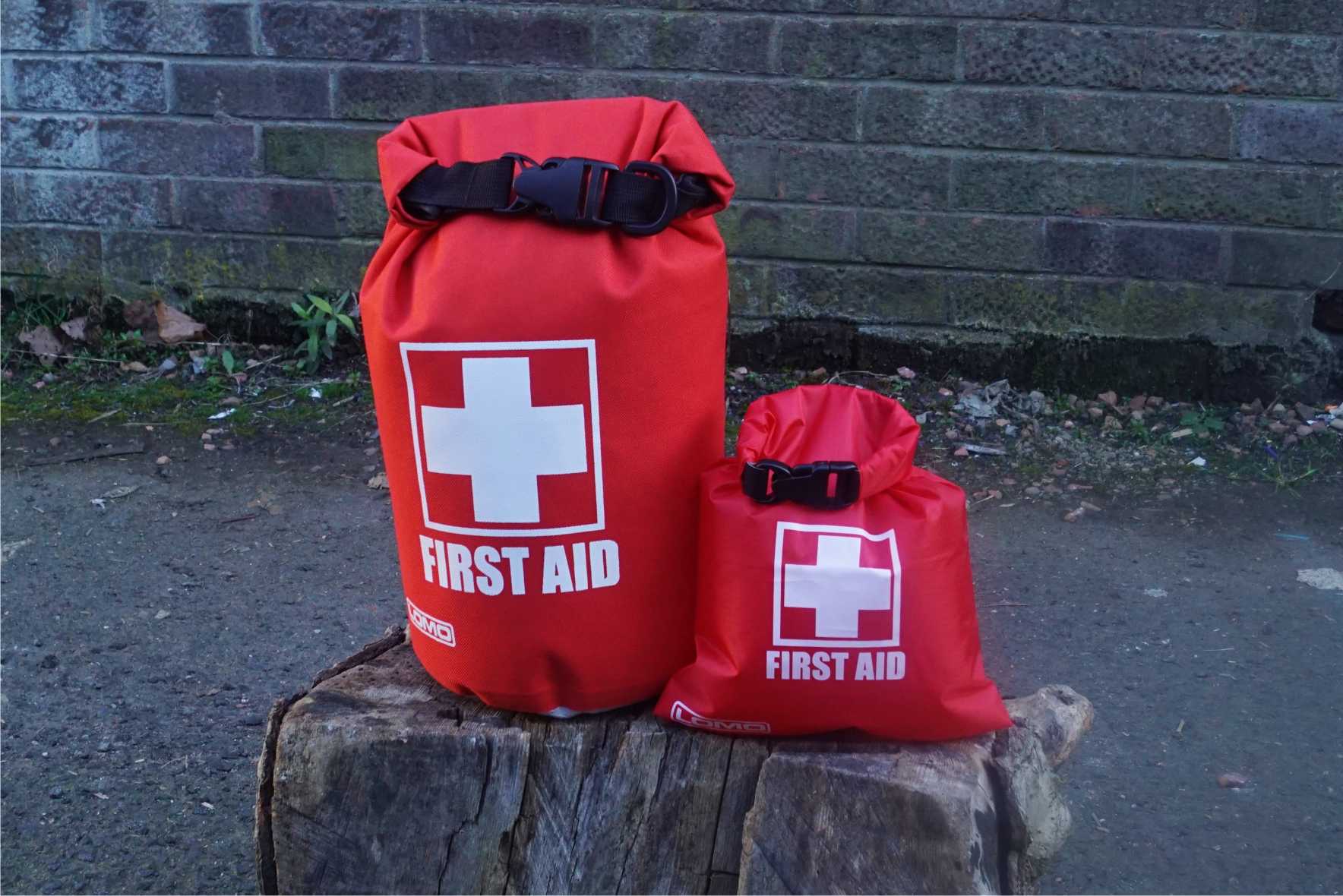
First Aid Dry Bags
First Aid dry bags are made to keep first aid kits dry and are used in many different sports. We supply first aid contents with some of these bags but also offer the bags empty as users often have different preferences as to what a first aid kit should contain.
Whilst first aid kits that you see around the office are normally green the outdoor industry has found that this colour is easily lost in the outdoors so most outdoor first aid kits you will come across are red so they stand out from the surrounding countryside.
5L bags are aimed at group first aid kits and activity providers whilst the 3L and 1L sizes are aimed at personal first aid kits.
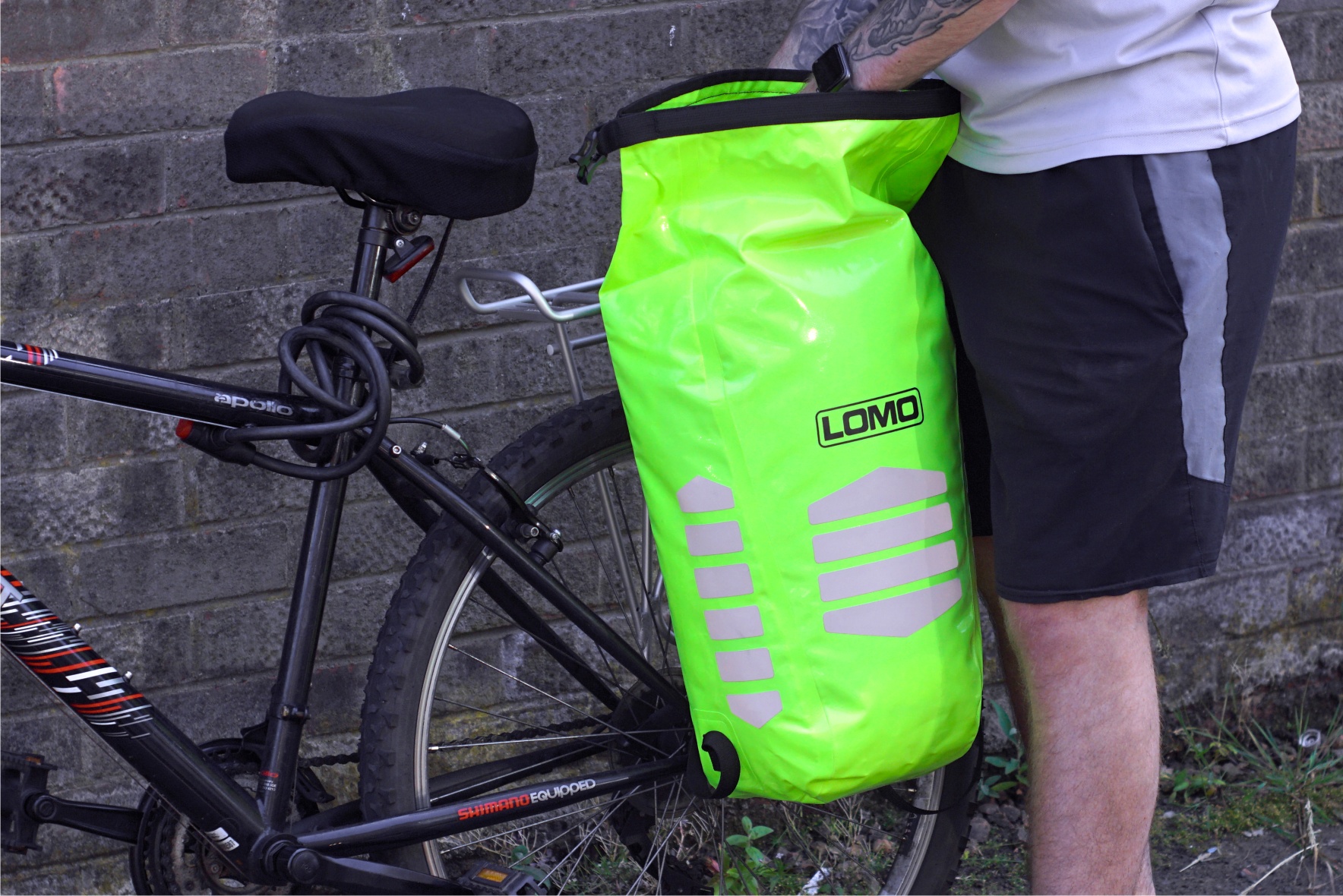
Cycling Dry Bags
Cycling drybags will be used for everything from commuting to work to cycling from one end of the country to the next. So people will choose different types of bags depending on what they are doing. Commuter cyclists tend to favour a waterproof rucksack so that when they arrive at work they simply lock their bike and walk into their workplace.
Hi viz drybag rucksacks are very popular, particularly in the Autumn and Winter months as they will both keep your gear dry and also help get you seen on the road.
Touring cyclists will often combine panniers with other bags such as drybag rucksacks and handlebar bags.
If you have a rear pannier rack you can also add a tail bag to the pannier bags to give you extra storage.
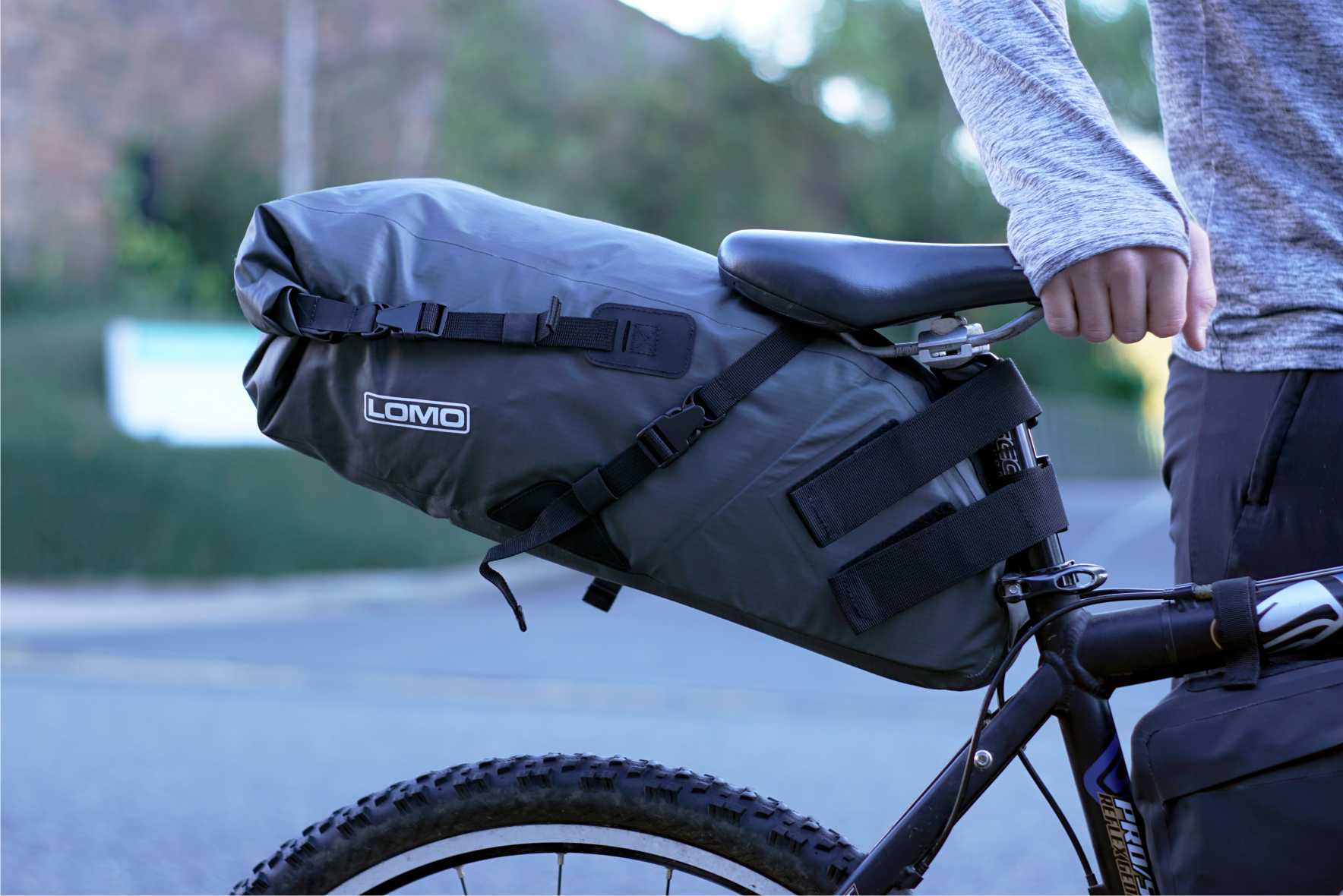
Bikepacking Dry Bags
Bikepacking is a relatively new sport and is aimed people who wish to go touring on a mountain bike. A cross between backpacking and biking, a bikepacker will want to carry their gear on a mountain bike in a way that will allow them to negotiate rougher terrain than a traditional pannier setup would allow.
Typical would include a frame bag, seat pack (A giant saddle bag) and handlebar bag.
Bike packing dry bags will tend to be durable and lightweight and allow the rider to go over rougher terrain than otherwise possible. The bags should be firmly strapped into position to minimise any movement whilst riding.
It is not intended that mountain bikers will undertake full on downhill circuits with their bags in place but be able to go cross country on trails and paths unsuitable for road bikes with traditional pannier setups.
Licence to use this document
We often receive requests to use excerpts from our guides on other websites. We are happy for you to do this as long as you abide by the following condition. You must attribute the article to Lomo Watersport and include a link to our website www.lomo.co.uk at the bottom of every page containing the excerpt. The copyright of this document remains the property of Lomo Watersport
BEST SELLING DRY BAGS & BOXES
Check out what's hot right now!
